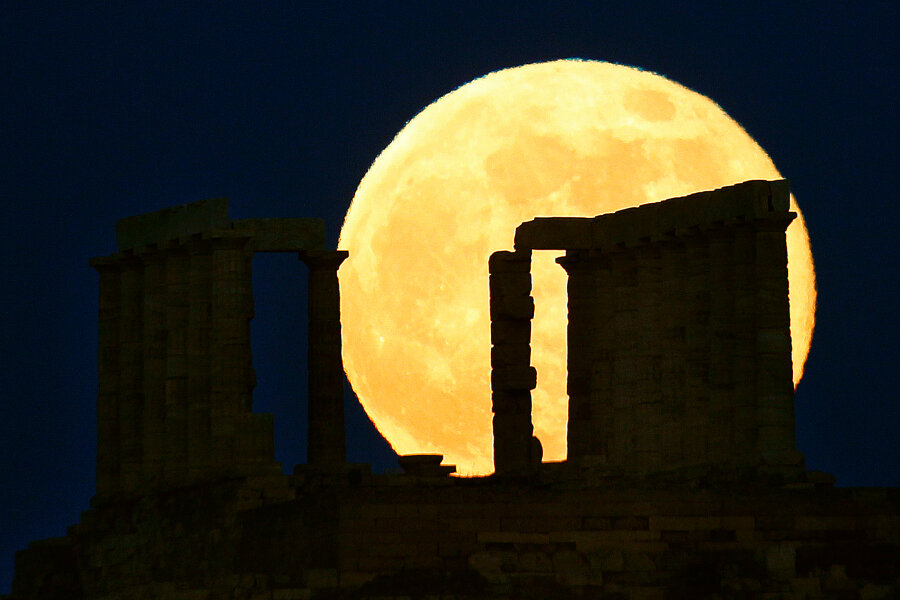Supermoons and beyond
Loading...
August has found a supermoon battling the Perseid meteor shower for the attention of sky gazers. The sight of an unusually large and bright full moon beaming back at Earth, and the light show provided by meteors blazing across inky skies, has added heavenly fireworks to late summer.
But a bigger celestial story is being written by scientists doing work unseen by backyard observers. After a 10-year pursuit, the European Space Agency’s Rosetta spacecraft, the first to ever visit a comet, has caught up with its prey. It will soon begin orbiting the comet and by November is expected to send a probe to its surface.
Comets, scientists say, may carry material from the time the solar system itself was formed. A close-up analysis of this comet may yield important answers to scientific questions as well as raise new questions scientists haven’t even known to ask.
But looming above even that sky-high observation is a still bigger question: Does life exist beyond this planet?
The planned James Webb Space Telescope, scheduled to launch in 2018 as a successor to the Hubble Space Telescope, will be the most powerful yet. It will build on existing work that has already located planets orbiting other stars. Increasingly it appears that Earth has a multitude of brother and sister planets spinning around their own suns.
Sophisticated analyses of data returned by space telescopes may not be able to single out a planet that definitely has life. But it could show that the conditions conducive to life are so prevalent, and promising planets so numerous, that the statistical likelihood of life somewhere “out there” becomes overwhelming.
“[I]t is within our reach to be the first generation in human history to ... learn if there is life of any kind beyond Earth,” wrote Dr. Sara Seager, an astronomer at the Massachusetts Institute of Technology, in a widely cited scientific paper released in early August.
In September the National Aeronautics and Space Administration and the Library of Congress will gather historians, philosophers, and theologians at a symposium to ask how humanity should prepare for the discovery of life beyond planet Earth.
Some argue that finding even primitive microbial life elsewhere would severely shake up humanity’s way of thinking about itself. It might create a watershed akin to Galileo proposing that Earth was not at the center of the universe. Some even see it as a death blow to religion.
But other scholars have pointed out how the concept that life can only exist on Earth limits an infinite God. “The more things we discover, the more wonders of God there will be,” argues Salman Hameed, an associate professor of integrated science and humanities at Hampshire College in Amherst, Mass. And many point to the biblical reference to a God of “heaven and earth,” who “telleth the number of the stars” and “calleth them all by their names,” to indicate that His creation includes much more than this planet. In fact, concludes one astronomer, anything other “than a universe beaming with life is an insult to glory of the God.”
Might we find that as our understanding of the universe grows so does our concept of God?
That’s a cosmic thought to ponder – perhaps on a late summer night while bathing in the light of a supermoon or watching meteors flash across the sky.







